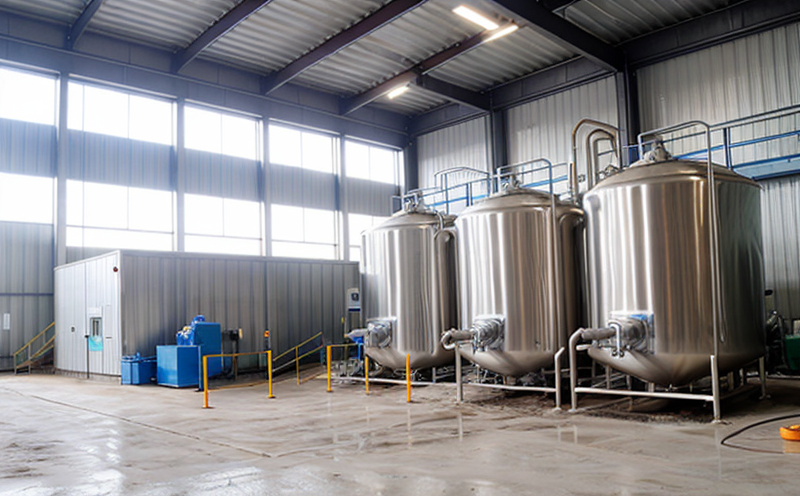APHA 9215 Heterotrophic Plate Count Test in Industrial Water
The APHA 9215 Heterotrophic Plate Count (HPC) test is a critical method used to quantify the total number of viable heterotrophic bacteria present within industrial process water. This standardized procedure adheres strictly to American Public Health Association (APHA) guidelines, ensuring accurate and reliable results that are essential for maintaining optimal water quality in industrial processes.
The HPC test plays a pivotal role in safeguarding the integrity of industrial operations by providing insights into microbiological stability. By regularly monitoring HPC levels, quality managers can ensure compliance with stringent industry standards and protect against potential contamination risks. This testing method is particularly vital for industries where water serves as a critical component in production processes, such as pharmaceuticals, electronics manufacturing, and food processing.
During the APHA 9215 procedure, samples are collected from industrial process water systems and then inoculated into nutrient broth under controlled conditions. After incubation, colonies of viable heterotrophic bacteria are counted on agar plates, yielding an accurate HPC value. This quantitative assessment allows for precise tracking of bacterial activity over time, enabling proactive measures to be taken before contamination can affect product quality or operational efficiency.
It is important to note that the HPC test focuses solely on heterotrophs—organisms capable of growth using organic compounds as their sole source of carbon. This distinction ensures a more accurate reflection of potential pathogenic risks compared to tests that include autotrophic bacteria, which are not involved in organic degradation processes.
The APHA 9215 HPC test is widely recognized for its reliability and consistency across various industrial settings. Its adoption by leading organizations underscores the importance placed on maintaining high standards of water quality in industrial environments. Compliance with this standard not only ensures regulatory adherence but also enhances confidence among stakeholders regarding the safety and reliability of products derived from these processes.
For effective implementation, laboratories must adhere strictly to recommended protocols outlined in APHA 9215, which includes precise sample collection techniques, controlled incubation conditions, and accurate colony counting methods. Rigorous quality control measures are essential to minimize variability between test results, ensuring consistent outcomes across multiple batches or locations.
In summary, the APHA 9215 HPC test serves as a cornerstone for monitoring bacterial activity in industrial process water systems. By providing quantitative data on viable heterotrophic bacteria, this test supports informed decision-making processes aimed at maintaining optimal water quality throughout complex manufacturing environments.
Why Choose This Test
The APHA 9215 Heterotrophic Plate Count (HPC) test is a cornerstone for ensuring the microbial safety and quality of industrial process waters. Here are several compelling reasons why choosing this specific test is advantageous:
- Comprehensive Microbial Analysis: The HPC method provides detailed insights into heterotrophic bacteria populations, offering a complete picture of potential contamination risks.
- Rigorous Standardization: Adherence to APHA guidelines ensures consistent and reliable results across different laboratories, facilitating easier comparison and interpretation of data.
- Industry-Wide Acceptance: This standardized procedure is widely recognized by regulatory bodies and industry stakeholders, enhancing credibility and trustworthiness.
- Proactive Contamination Mitigation: Regular HPC testing enables early detection of bacterial growth trends, allowing for timely interventions to prevent contamination incidents.
- Regulatory Compliance: Compliance with APHA 9215 helps meet regulatory requirements imposed by various national and international standards organizations.
- Data Accuracy: Precise sample handling techniques combined with controlled incubation conditions yield accurate colony counts, providing trustworthy data for informed decision-making.
- Cost-Effective Solutions: By identifying potential issues early on, the HPC test prevents costly downtime and rework associated with contaminated products or processes.
- Sustainability Focus: Ensuring high-quality water in industrial processes contributes to overall sustainability efforts by reducing waste generation and optimizing resource utilization.
Overall, selecting the APHA 9215 HPC test for monitoring heterotrophic bacteria in industrial process waters offers numerous benefits that align with modern quality management practices. It not only ensures regulatory compliance but also promotes sustainable operations through proactive contamination control measures.
International Acceptance and Recognition
- ISO Standards Alignment: The APHA 9215 Heterotrophic Plate Count test aligns closely with ISO standards, particularly those related to water quality assessment. This alignment ensures that the results obtained are internationally comparable.
- American Public Health Association (APHA): As a leading organization in public health and environmental protection, APHA's guidelines serve as benchmarks for many industries worldwide. The HPC test is widely recognized and used across various sectors.
- European Norms: The HPC method also complies with European standards such as EN 12846:2003, which govern the analysis of microorganisms in water intended for human consumption or industrial use. This compliance ensures that results meet EU requirements and are acceptable across member states.
- World Health Organization (WHO): The WHO recommends HPC as a key parameter when assessing water quality. By adhering to APHA 9215, laboratories provide data consistent with global health standards.
The widespread adoption of the APHA 9215 Heterotrophic Plate Count test across international borders reflects its reliability and relevance in maintaining high-quality industrial process waters. Its alignment with multiple authoritative bodies underscores the importance placed on this testing method within the broader context of water quality management worldwide.





